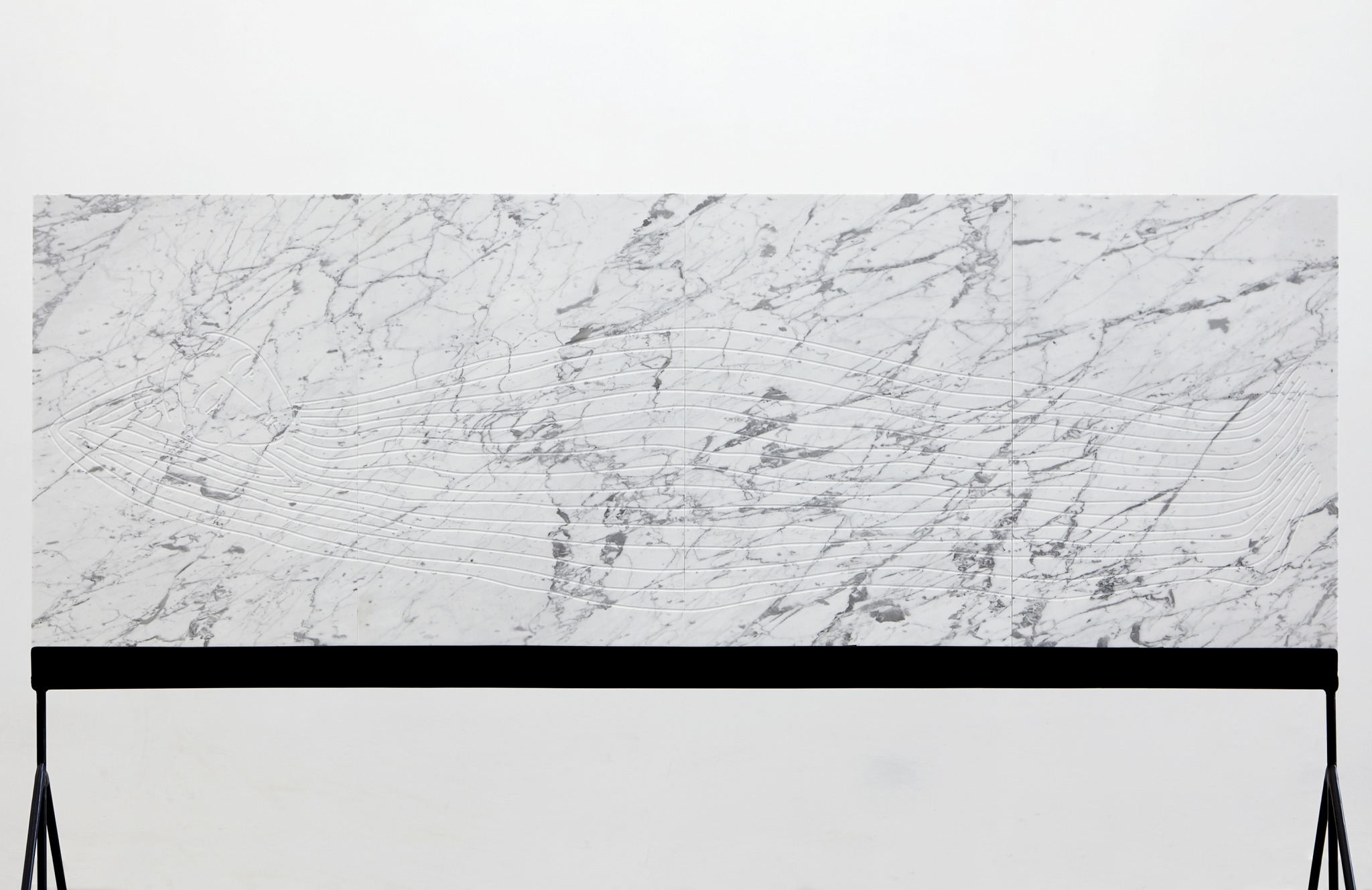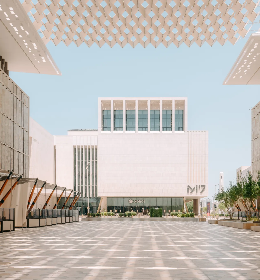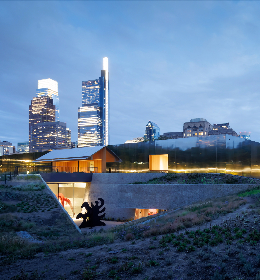“I hope that my poems can be part of the growing number of feminist voices now present in the international literary field. I believe that this is not only a subject or a theme of texts but it is also a certain way of working - choosing collaboration over competition, working together rather than individually, aiming to create spaces with no strict hierarchy. This is definitely what we tried to do while preparing for this exhibition,” explains Eszter Kállay in an email response to my questions about an exhibition with Kállay’s poetry displayed alongside Sári Ember’s art works. The show, entitled "Bread is Made of Stone", is at Ani Molnár Gallery in Budapest.

Bathers in Black, 2020, ceramics, 57x40x40 cm (detail) | Photo: Sári Ember | Courtesy of the artists and Ani Molnár Gallery
In attending the exhibition I found the phrase ‘pancakes and bread are made of stone’ in one of Kállay’s poems and began to understand the feminist nature of these works in citing shared stories of indoctrination into body shaming and cultural restrictions imposed on women.
An excerpt from Kállay’s poem Scales as translated into English by Katalin Kállay reads:
i was ten when i noticed that women reduced around me. something made them all disappear, a war or years of toil.
if you think chocolate, pancakes and bread are made of stone, you’ll never be overweight, they said to me then.
The poem continues with an emphasis on the practical, acknowledging the process of coercive control that is weighted and obscene in its lack of usefulness; Kállay hits it home to the reader with the lines following the above excerpt:
since then, I’ve been carrying the stones in my arms, not stones, vegetables.
they pull the bag down. if they were stones,
a house could be made of them. not this way. I must rush from the store,
away, with the weight of the women in my arms, with the food, toward the women.
Kállay iterates the dialogue that developed between her and Ember about the themes of their personal histories and societal pressures: “The exhibition grew out of an ongoing dialogue, a deep and interesting, multi-layered exchange which included the topic of patterns within our families, the role of the female members of our families and the cross-generational burden on women. Soon, another branch of topics grew out of this, featuring the relationship to our bodies, the feelings of shame and the feeling of an external gaze upon oneself. The conversations meandered in these directions and we found that these subjects deeply interest both of us.”
The works are not ekphrastic, but evidence the internal and external dialogues of both artists with themselves and each other. Each of them as creatives takes a stand and presents a personal perspective, a deep sense of self in a rapidly changing and multi-faceted world.
“It is also putting Eszter’s poetry in the context of my work - they are placed next to each other with no hierarchy. It is a rare thing: we mostly see text and object, text and image as one illustrating or describing one another,” explains Ember regarding the connection and contextualization of their work.

Egg with Water, ceramics, 31x23,5x22 cm | Photo: Sári Ember | Courtesy of the artists and Ani Molnár Gallery
Ember explains her desires in the naissance of this shared exhibition representing an ongoing discourse: “When I was planning my show at the gallery, I wanted to do something about my grandmothers, about the heritage they left to me, about their social roles in comparison with mine, and their deaths. At that time I came across Eszter’s poems, and she was talking about very similar things that had interested me for the exhibition, and I felt her tone and approach very close to mine. I invited her to make a duo show. I think that it is interesting to have her texts and objects in dialogue, or talking about the same thing, or completing each other.” Ember’s works are presented in ceramic, fabric and marble, while Kállay’s poems are casually presented as paper on the walls.

Reclining Figure in Stone, 2020 marble, iron 135,5x65x160 cm | Photo: Sári Ember | Courtesy of the artists and Ani Molnár Gallery
Through Ember’s works, I was catapulted back to my visits to museums in Greece, the Cycladic art with simple and elegant face shapes and linear suggestions of facial features that I saw there appearing in my mind. I wondered if Ember was specifically considering this part of art history: ”I use lots of references, from ancient art, folklore, canonised objects of museums, contemporary design, children’s drawings. I draw inspiration from many different representations, and Cycladic art is among them, I love it!”
Her vase forms are as amphora with carved stories, incomplete, to be interpreted or perhaps minimalized portraits, just enough to let us know there is something to ponder, faces to suggest human connection. A marble slab is presented in an exquisite display, a simple metal stand that allows it to be set above the ground at an excellent height for viewing its incised lines. At first glance, the parallel and gently curving lines remind me of a Humpback baleen whale, but then, I see the human face and my imagination is frozen in the signifying lines of these features, a semiotic net of cultural references enshrined within them. Indeed I think of tombs, or a carved stele I might have observed in a museum, but here she has synthesized ancient and contemporary in a manner akin to fusion cooking, from one part of history to another, each bringing flavors and reminiscences along with new interpretations. “I work materials that have a long history of their usage and have strong symbolic value. We know many marble, ceramics, silk objects from museums, but they are also used nowadays. I make objects that have a strong connection to the previous usages of their material and shapes, but they can be interpreted from the present.”
I return again to the words of Kállay, this time an excerpt translated by Anna Bentley from the poem, lists, hands:
you open my hand and give me the pebbles,
water has polished off their tiredness.
the branches of the river divide in my palm
and are soaked up in two seconds in the sandpit.
together we pick up the plastic spade, before dinner
we’ll dig down to the bottom of the earth’s crust.

Detail: Reclining Figure in Stone, 2020 marble, iron, 135,5x65x160 cm | | Photo: Sári Ember | Courtesy of the artists and Ani Molnár Gallery
To dig down to the bottom of the Earth’s crust before dinner — I believe this reference is one of the most poignant; as artists, we dig, we recycle, we are archeologists retelling and imagining, combining human histories and redefining them, explaining once again, simplifying and adding complexity. These two creatives have explored unique and parallel paths that stand one alongside the other with equal presence and definition, elegant, exquisite, and perpetual in their gaze.









